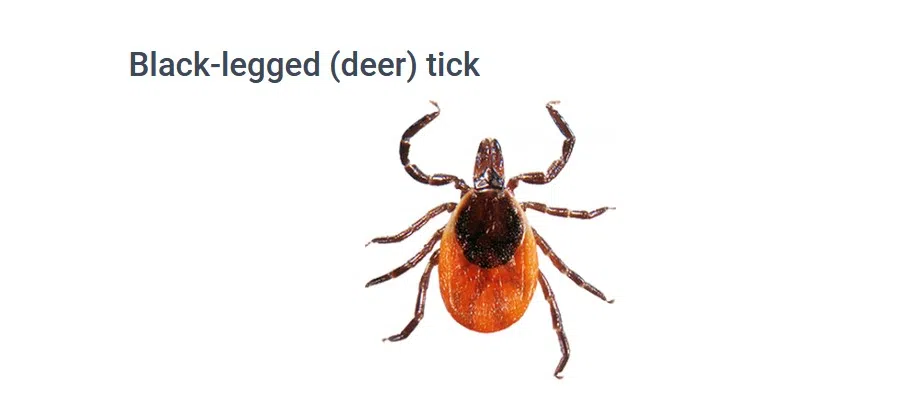For some the warm winter was welcomed by now we are all going to pay for it, as the weather wasn’t enough to kill off the tick population, and with it officials say there will be an increase in the risk of Lyme Disease.
Tick mortality rates are based upon colder sustained temperatures in the -25 to -30 range, something the region did not get much of over the past few months.
Coordinator of the vector borne disease program with the Thunder Bay District Health Unit, Dr. Ken Deacon, says this year they are expecting a bumper crop, and is asking for the public’s help.
“If you do find a black-legged tick you should notify your health unit, we do send people out to do active surveillance. We’re looking for populations of ticks that are just establishing.”
Thunder Bay sits on the fringe of the range for black-legged ticks, but by 2080 they are expected to be as far north as James Bay.
While the Northwestern Health Unit no longer accepts ticks for testing, it does track medically confirmed tick-borne cases as well as performs active tick surveillance in the region.
NWHU Medical Officer of Health Doctor Kit Young Hoon says while the season is early, awareness is key.
“You still need to be thinking about ticks and making sure you are protecting yourself. At this point I don’t think we have a clear trend in Lyme Disease, but we have seen more Lyme Disease now than considering ten years ago.”
Black-legged ticks or “deer ticks” are carriers for the notorious disease which results in fever, headache, fatigue and skin rash, if left untreated it can spread to joints, the heard and the nervous system.
Treatment of the disease requires a few weeks of antibiotics.
Dr. Deacon notes you won’t immediately get Lyme Disease if a black-legged tick bites you, as they must feed on you for at least 24 hours before you get an infection.
But while we blame black-legged ticks for the disease, he says ticks aren’t naturally born with it.
“The reservoir for Lyme Disease is in the rodent population, and the first stage which is the pinhead size, will be in the area, in the soil or dust and they feed on a mouse.”
Active protection against all ticks includes:
- Wearing light coloured clothing
- Using repellent with DEET or Icaridin
- Tucking pant legs into socks when walking in tall grass
- Checking yourself after being outdoors, specifically in warm hidden areas such as armpits, around the hair and ears, between the legs and the back of the knees
- Checking pets as well, in and around the ears, on their belly and between their toes
- Medication for animals is also available in both ointments and pills which kill the tick when they bite your furry friend
Even having well manicured lawns plays a role in prevention, as the shorter the grass the more difficult it is for ticks to engage in “questing” as the blind arthropods clime to the top of long grass with their arms outstretched and grab onto anything they can in search of their next meal, such as pants, socks shoelaces or skin.





